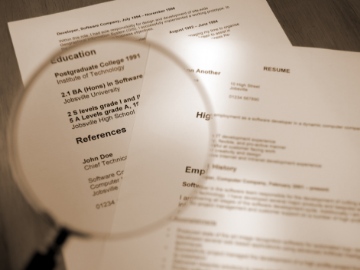How to Complete a Job Application

Job applications are the most important part of your job search process. Your job application is what makes the first impression. Simple mistakes can see your application in the trash before you've even had a chance to prove yourself. With growing market competition, you need to know how to complete a job application properly - and impressively.
Most applications will require a resume, others seek answers to questions and surveys, while some require you to sign up to a website and fill out a form. Whatever the job application method, you need to be prepared. This is your chance to demonstrate how your skills and values align with the position you're applying for.
Step 1. Familiarize Yourself with the Job Description
It may seem like obvious advice, but it's crucial to read the job description properly. Read it twice. Job descriptions aren't just for show. They are filled with useful keywords and prompts for what recruiters want to see in your job application. Use it like a cheat sheet.
If a job description mentions the same word or phrase a few times - it's a keyword. Note it down and use it in your resume and/or cover letter. Your job application will most likely go through an application tracking system (ATS). Companies use this software to scan applications for keyword requirements before a recruiter sees them.
Step 2. Tailor Your Resume & Cover Letter
Customize your resume and cover letter for each job application. If you're applying for the same position within the same industry, your template resume is a good start. Tailoring it for each company is the key to standing out.
As mentioned in Step 1, make sure you mention the keywords and phrases that the company clearly values. This may only require minor resume tweaks. Take the following example:
Existing resume job history bullet point:
Reduced company costs by updating software and relieving required workforce from 20 to 10 staff members.
Job description requirement:
Increase company revenue using effective, modern technology.
Updated bullet point:
Increased company revenue by modernizing existing technology to relieve required workforce from 20 to 10 staff members and ultimately saved on costs.
Use the company website to identify company values. These should be mentioned in your cover letter. Share a company value? Let them know why. Enjoy a hobby aligned with the company's recent event? Tell them! This aspect of your job application is the perfect opportunity to paint a rounded picture of how you'd fit into a company.
Step 3. Check for Errors
Human error is unavoidable. Before you complete your job application, check for errors. Microsoft Word already scans for spelling errors. Go a step further and install Grammarly or ProWritingAid to scan for grammar and clarity errors.
Not only will this avoid embarrassing simple mistakes that can cost you the opportunity, but the initiative also demonstrates care. Thoroughness is a transferable skill. If you do land the job, you're most likely going to be communicating to some degree. Apply as much care into your resume as you would on the job.
Step 4. Review the Submission
Besides checking for spelling and grammar errors, make sure you've done exactly what's asked of you in the submission. Review each step ensuring that you've answered ALL the questions (even if it's just N/A). Have you provided all requested documents in the required format? Some application prompts may look generic, but ensuring they're all addressed will further demonstrate your true and careful interest.
Step 5. Utilize Social Media
Social media can be beneficial and catastrophic. The catastrophe can come if your profiles are set to public and your potential employer sees something you wouldn't want them to. The advantages are in connections.
Your online image isn't something to brush over. Some employers will do background checks. Ensure that accounts are visible, but set your content to private. This shows that you're a real person, but doesn't disclose anything unprofessional. Use professional social media like LinkedIn to impress. Personalize your profile, make relevant connections, and engage with industry-related content.
You can also use certain social media to make connections related to the application. Perhaps you can find the recruiter's personal LinkedIn profile or email address. Send them a message to notify them of your application and reiterate your interest. You can draw attention to your name and personalize the interaction. Attach your resume for good measure.
Step 6. Submit & Record your Job Application
The final step is submission. Now that you're certain your job application is error-free, tailored, follows submission guidelines, and utilizes key points from the job description –submit and record it.
Record the job application details in a journal so you can track all your applications. Set a deadline for when you'll send follow-up emails. It's important to organize and manage your journal when you're applying for many jobs at a time. Remember, rejection or even silence is part of the process. Keep your mindset positive and your job applications thorough.


